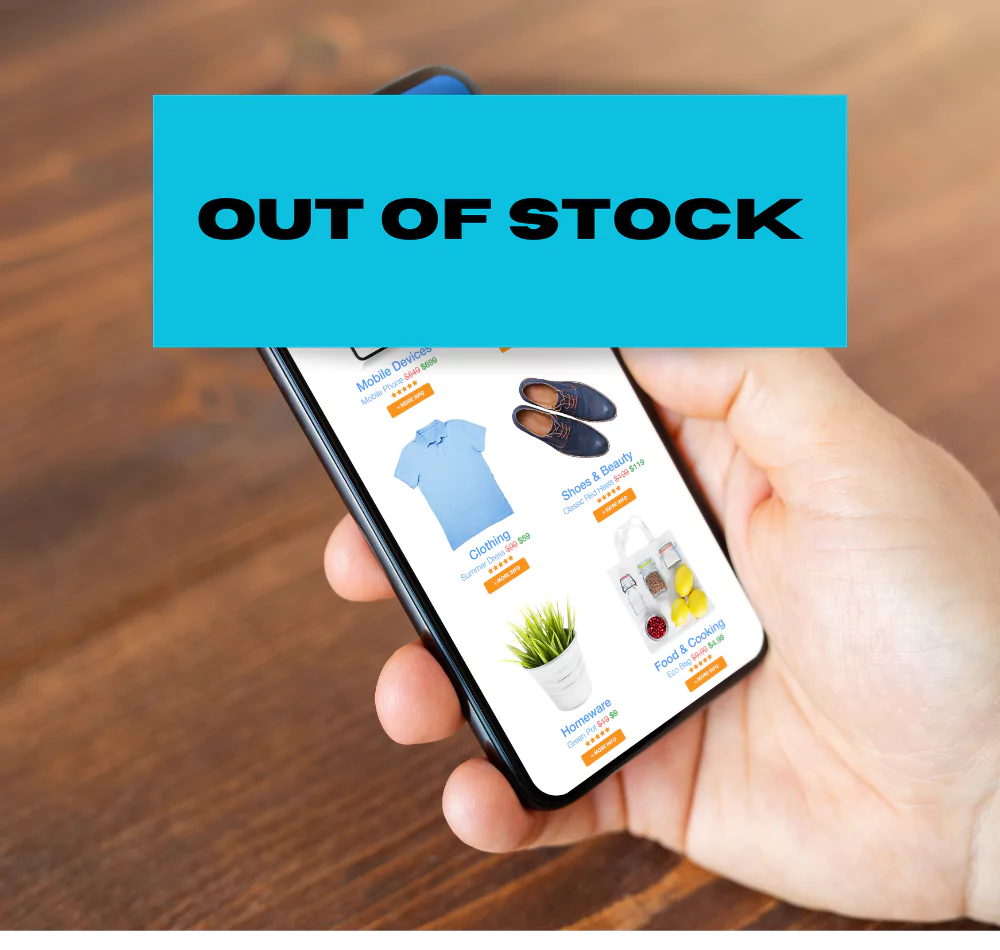As a fulfillment provider or third-party logistics (3PL) company, understanding how to navigate and optimize your clients’ experience in Amazon Seller Central is essential for streamlining operations and ensuring their success on the platform. In this comprehensive guide, we’ll dive deep into various aspects of Amazon Seller Central, providing valuable insights and best practices that are relevant to warehouse operators, logistics providers, and 3PL managers. Additionally, we’ll discuss the benefits of integrating a warehouse management system (WMS) like SphereWMS to further enhance operational efficiency.
By understanding the intricacies of Amazon Seller Central and adapting your fulfillment operations to meet customer demand, you can help your clients achieve success on the Amazon marketplace, ultimately leading to the growth of your own business.
Frequently Asked Questions
What is Amazon Seller Central and how do warehouses use it?
Amazon Seller Central is the web interface where merchants manage their Amazon marketplace presence including product listings, inventory, orders, and account settings. Warehouses fulfilling Amazon orders access Seller Central for order downloads, tracking uploads, and performance monitoring. Integration with WMS platforms automates these workflows for efficient multi-channel fulfillment.
How do I manage inventory levels between my warehouse and Amazon?
Maintain accurate inventory counts in Seller Central to prevent overselling and stockouts. Use inventory management tools to set reorder alerts and track sell-through rates. Many sellers split inventory between their warehouse (merchant fulfilled) and FBA for flexibility. WMS integration automatically syncs available quantities across all sales channels.
What performance metrics does Amazon track for sellers?
Amazon monitors Order Defect Rate, Late Shipment Rate, Pre-Fulfillment Cancel Rate, and Valid Tracking Rate. Failing to meet targets results in account warnings or suspension. On-time shipping must exceed 97% and valid tracking must exceed 95%. Warehouse operations directly impact these metrics through accurate picking, timely shipping, and proper tracking uploads.
How can warehouses improve Amazon seller performance?
Implement same-day shipping cutoffs to ensure orders ship within Amazon’s expected timeframes. Use automated tracking uploads to meet valid tracking requirements. Maintain accurate inventory to prevent cancellations from stockouts. Quality control processes reduce order defects from incorrect items or damaged shipments reaching customers.
What are the benefits of integrating WMS with Amazon Seller Central?
Integration eliminates manual order downloads and tracking uploads that cause delays and errors. Real-time inventory synchronization prevents overselling across channels. Automated workflows ensure orders enter the warehouse immediately for faster fulfillment. Performance dashboards provide visibility into Amazon-specific metrics alongside overall warehouse KPIs.
Understanding Amazon Seller Central for 3PLs and Fulfillment Providers
Overview of Amazon Seller Central
Amazon Seller Central serves as a vital hub for businesses to manage their inventory, orders, and sales when selling on Amazon. It provides various key sections for sellers to explore, including:
- Catalog: Manage product listings, variations, and Enhanced Brand Content (EBC), now called A+ Content.
- Inventory: Control stock levels, monitor sales data, and manage FBA shipments.
- Orders: Process and track customer orders, manage returns, and handle chargebacks.
- Performance: View performance metrics, access account health reports, and monitor customer feedback.
- Advertising: Access advertising tools like Sponsored Products, Sponsored Brands, and Amazon DSP, along with promotional options such as coupons and lightning deals.
Seller Central vs. Vendor Central: Which One Is Right for Your Clients?
Seller Central suits businesses selling directly to customers on Amazon’s marketplace, offering control over pricing, inventory, and customer relationships. Vendor Central is invite-only for manufacturers selling directly to Amazon, which then resells to customers and controls all aspects. As a fulfillment provider, you’ll primarily work with Seller Central clients, while Vendor Central partnerships focus on timely shipments to Amazon fulfillment centers.
Amazon Business for 3PLs and Fulfillment Providers:
Another aspect to consider is the support you can provide to clients who have an Amazon Business account. Amazon Business is designed to cater to the specific needs of B2B customers, offering features such as quantity discounts, business pricing, and tax-exempt purchasing. As a fulfillment provider or 3PL, you can help your clients optimize their operations for the B2B market, ensuring efficient order processing and delivery, while meeting the unique requirements of Amazon Business customers.
Amazon Inventory Management for Warehouse Operators
Effective inventory management is crucial for 3PLs and fulfillment providers to prevent stockouts and overstocking. Here are some best practices for managing inventory in Amazon Seller Central:
Best Practices for Inventory Management
- Create High-Quality Product Listings: Develop accurate and complete product listings that include high-quality images, descriptions, and specifications. Use relevant keywords to improve search visibility and consider using Enhanced Brand Content (EBC) or A+ Content to further showcase your clients’ products.
- Update Inventory Levels Consistently: It’s essential to keep inventory levels updated in real-time to reflect accurate availability. Utilize tools like SphereWMS to automate inventory updates and prevent discrepancies.
- Track Sales Data: Monitor sales data to identify trends, inform inventory decisions such as reordering and forecasting, and identify opportunities for promotions or other marketing strategies.
Automated Inventory Updates and Order Syncing
Utilizing WMS features such as automated inventory updates and order syncing can prevent stock discrepancies, overselling, and other fulfillment errors. This automation ensures that the Amazon Seller Central inventory levels are always up-to-date and accurate, allowing warehouse operators to focus on other important tasks, such as order fulfillment and customer service.
By following these best practices and utilizing automated inventory updates and order syncing, 3PLs and fulfillment providers can effectively manage inventory in Amazon Seller Central and provide excellent service to their clients.
Streamlining Amazon Order Processing for 3PLs
To streamline Amazon order processing for 3PLs, fulfillment providers can adopt the following strategies and tips:
Order Management:
Establish efficient order processing workflows that integrate with Amazon’s fulfillment network. Automate order processing by integrating your warehouse management system with Seller Central, which enables real-time order syncing and reduces the chances of errors. Using a WMS like SphereWMS to automate order processing and tracking can further help in streamlining the order management process.
Shipping Templates:
Create customized shipping templates based on your clients’ specific requirements, including accurate shipping costs, delivery times, and carrier options. Offering a variety of shipping speeds and options can cater to the diverse needs of Amazon customers.
Handling Returns:
Have a well-defined returns policy in line with Amazon’s guidelines. This ensures that the return process is as smooth as possible for customers, and that returned inventory is managed efficiently. Fulfillment providers can use their WMS to track and manage returned inventory and ensure it is processed promptly.
Integrating with Amazon’s Fulfillment Network:
By utilizing Amazon’s fulfillment network, 3PLs can enhance their order processing capabilities and improve their delivery performance. Amazon offers two types of fulfillment programs, Fulfillment by Amazon (FBA) and Seller Fulfilled Prime (SFP), both of which offer varying levels of support for order processing, shipping, and customer service. By integrating with either program, 3PLs can leverage Amazon’s infrastructure and resources to streamline their order processing and provide better customer service.
Optimizing Amazon Shipping Settings for Logistics Providers
To help your clients achieve top-notch delivery performance and customer satisfaction, it’s essential to optimize their shipping settings in Seller Central. Here are the key areas to focus on:
Shipping Regions:
Define shipping regions that cover your clients’ target markets, including international destinations if applicable. Specify regional shipping rates and delivery times for each destination to avoid unexpected shipping costs and delivery delays.
Shipping Services:
Offer a variety of shipping services to cater to different customer preferences, such as expedited and standard shipping. Collaborate with your clients to negotiate better shipping rates with carriers and identify the most cost-effective shipping options.
Shipping Rates:
Ensure that shipping rates are competitive and accurately reflect the costs associated with different shipping services and destinations. Regularly review and adjust shipping rates based on carrier pricing changes and market trends to help your clients stay ahead of their competitors.
Managing Shipping Fees and Costs:
Keep track of shipping fees and costs to identify areas for cost savings and optimization. Work with your clients to manage their shipping expenses and improve their overall shipping strategy.
Leveraging Advanced Amazon Performance Metrics for Fulfillment Providers
To maintain a high seller performance rating, it’s important to monitor and optimize performance metrics in Seller Central. Here are some key metrics to track:
Understanding Key Metrics and Reports:
- Order defect rate (ODR): This metric measures the percentage of orders with negative feedback, A-to-z Guarantee claims, or chargebacks. It’s essential to keep the ODR below Amazon’s target threshold to maintain a healthy account status. Work with your clients to improve product quality, ensure accurate product descriptions, and address customer complaints promptly.
- Pre-fulfillment cancel rate (PFCR): This metric measures the percentage of orders canceled by the seller before shipment confirmation. Efficient inventory management and order processing can help minimize PFCR. Make sure your clients’ inventory levels are accurate and up-to-date, and establish clear policies for order cancellation.
- Late shipment rate (LSR): This metric measures the percentage of orders shipped later than the expected ship date. Streamline shipping processes and maintain clear communication with carriers to minimize late shipments. Use your WMS to automate and streamline order processing, and consider utilizing Amazon’s Buy Shipping service to simplify shipping label creation.
Analyzing and Improving Performance:
Amazon provides several reports to help you track performance metrics and identify areas for improvement, such as the Account Health dashboard, the Customer Metrics page, and the Feedback Manager tool. Regularly analyze these reports to identify trends, address issues, and make data-driven decisions to optimize performance. Work with your clients to implement strategies to improve performance, such as enhancing product listings, improving inventory management, and offering competitive pricing and shipping options.
Managing Amazon FBA Shipments for 3PLs and Fulfillment Providers
Fulfillment by Amazon (FBA) is a popular service that allows sellers to store their products in Amazon’s fulfillment centers, and Amazon handles the packing, shipping, and customer service for those orders. As a 3PL or fulfillment provider, it’s important to understand FBA and integrate it with your clients’ operations to ensure a seamless fulfillment process. Here are some best practices to follow:
FBA Overview:
Before using FBA, it’s important to understand the costs and benefits associated with the service. Amazon charges fees for storage, order fulfillment, and other services, which can vary based on the product category, size, and weight. On the other hand, FBA can help increase sales by enabling Prime eligibility, improving customer trust, and reducing shipping times and costs.
FBA Shipment Creation:
To create an FBA shipment in Seller Central, you’ll need to select the appropriate shipment type (individual or case-packed), shipping plan, and prep requirements based on your clients’ inventory. Use a WMS, such as SphereWMS, to streamline the process and ensure all required information is included.
Labeling and Packaging:
Proper labeling and packaging are crucial for ensuring that products are received and processed efficiently by Amazon. Use Amazon’s guidelines for labeling and packaging to avoid delays or additional fees. SphereWMS can help you track and manage the labeling and packaging process, ensuring that all products are correctly labeled and packaged before shipment.
Shipping and Tracking:
Once FBA shipments are created and labeled, schedule shipments with carriers and provide accurate tracking information. Monitor shipments to ensure they arrive at the Amazon fulfillment center on time. Use your WMS to track shipments and identify any delays or issues with carriers.
By integrating FBA with your clients’ operations, you can take advantage of the benefits of FBA while ensuring a seamless fulfillment process. Make sure to understand the costs and requirements associated with FBA and use tools like SphereWMS to streamline the process and ensure accurate tracking and management of shipments.
Optimizing Amazon Advertising and Promotions for Your Clients
To maximize the visibility and sales of your clients’ products on Amazon, it’s important to leverage the platform’s advertising and promotional tools. Here are some best practices to keep in mind:
- Sponsored Products: Utilize Sponsored Products to promote individual product listings and reach customers who are actively searching for similar items. Identify relevant keywords and set bids to maximize visibility and sales.
- Sponsored Brands: Use Sponsored Brands to showcase your clients’ brand and a selection of their products in prominent placements within search results. Develop attention-grabbing creatives that highlight the brand’s unique value proposition and offerings.
- Amazon DSP: Target display and video ads to specific customer segments based on their shopping behavior and interests. Utilize Amazon’s proprietary data to identify high-intent audiences and develop personalized ads that resonate with them.
- Coupons and Lightning Deals: Offer limited-time discounts and promotions to incentivize customers to purchase your clients’ products. Create compelling offers that provide value to customers and help drive sales.
By leveraging these advertising and promotional tools, you can help your clients increase their visibility on Amazon, drive sales, and grow their business.
Overcoming Common Challenges in Amazon Seller Central
Fulfillment providers and 3PLs may encounter various challenges when managing their clients’ Amazon Seller account. To overcome these obstacles and maintain a healthy Amazon Seller Central account, it’s important to proactively address any issues that may arise. Here are some strategies for preventing and resolving common problems:
Addressing Listing Errors
Listing errors can lead to suppressed listings or even account suspensions. Work with your clients to ensure their product listings meet Amazon’s requirements, such as product title length, image quality, and keyword usage. Familiarize yourself with Amazon’s guidelines and best practices for creating and maintaining listings. In case of issues, reach out to Amazon seller support to resolve them promptly and prevent disruptions to your clients’ sales.
Maintaining Clear Communication with Carriers and Resolving Shipping Issues
As a fulfillment provider or 3PL, you play a crucial role in ensuring your clients’ products reach Amazon customers promptly and securely. To achieve this, establish a strong relationship with carriers and maintain open lines of communication to resolve any shipping issues or delays. Keep track of your clients’ sales reports to identify potential bottlenecks or areas for improvement.
In addition, stay informed about the shipping fees and variable closing fees associated with Amazon’s fulfillment centers, as well as the monthly subscription fees for professional selling plans, to help your clients manage their profit margins when selling online. Update shipping settings in Seller Central as needed, and work proactively to keep customers satisfied throughout the entire process.
By addressing operational challenges and maintaining a strong global presence, you can support your clients in becoming successful sellers and building thriving online businesses on the Amazon store.
Preventing Fulfillment Errors with a Warehouse Management System
As sales volume increases, the risk of fulfillment errors like overselling or stock discrepancies also grows. A warehouse management system can help you mitigate these risks and streamline your clients’ shipping and order fulfillment process.
Automated inventory updates and order syncing capabilities prevent overselling and stock discrepancies, and detailed reports on order processing, shipping, and other critical metrics can help you identify areas for improvement. Real-time tracking and shipping updates improve customer satisfaction and reduce the risk of shipping errors or delays.
By utilizing a warehouse management system to prevent fulfillment errors, you can help your clients maintain a healthy Amazon Seller Central account while increasing your own profitability and competitiveness as a fulfillment provider or 3PL.
Maximizing Amazon Seller Central Success for Warehouse Operators: Best Practices and Strategies
To help your clients achieve success on Amazon Seller Central, focus on the following best practices and strategies:
- Regular Communication: Maintain open communication with your clients to understand their business goals, inventory needs, and specific requirements for their Amazon operations.
- Data-Driven Decision-Making: Utilize data from Seller Central performance metrics and reports, as well as SphereWMS analytics, to make informed decisions and optimize your clients’ fulfillment processes.
- Continuous Improvement: Regularly review your clients’ Amazon operations to identify areas for improvement and implement changes that enhance efficiency and customer satisfaction.
The Importance of Customer Reviews and Feedback Management for Amazon Sellers
Customer reviews and feedback are essential to your clients’ success on Amazon, as they influence search ranking, conversion rates, and customer trust. Here are some tips to help your clients manage reviews and feedback effectively:
- Ensure Prompt and Accurate Order Fulfillment: Minimize negative feedback or complaints by ensuring prompt and accurate order fulfillment.
- Encourage Satisfied Customers to Leave Reviews: Provide excellent customer service and follow up on orders with personalized messages to encourage satisfied customers to leave reviews.
- Utilize Technology: Use technology to monitor and manage customer feedback, allowing for timely responses and issue resolution.
The Role of Amazon Brand Registry
Amazon Brand Registry is a program designed to help brands protect their intellectual property and grow their businesses on the platform. Here’s how you can support your clients in leveraging the benefits of Brand Registry:
- Encourage Clients to Enroll: Encourage clients to enroll in the program and provide the necessary documentation, such as trademark registration and brand assets.
- Monitor and Report IP Violations: Assist clients in monitoring and reporting intellectual property violations, counterfeit products, and unauthorized sellers on their listings.
- Optimize Product Listings: Help clients optimize their product listings with enhanced content, such as A+ Content and Storefronts, to showcase their brand and improve conversion rates.
Exploring Amazon Global Selling and Its Implications for Fulfillment Providers and 3PLs
Amazon Global Selling offers sellers the opportunity to reach customers in international markets. Here are some strategies for streamlining international fulfillment processes:
- Understand Import and Export Regulations: Familiarize yourself with the import and export regulations, customs requirements, and tax obligations of the countries your clients are targeting. Ensure compliance with these rules to avoid shipment delays or penalties.
- Evaluate Shipping Costs and Logistics: Consider partnering with carriers that specialize in global shipping or leveraging Amazon’s Global Logistics program for efficient and cost-effective solutions.
- Use WMS Features: Use advanced WMS features that SphereWMS offers such as multi-location inventory management and automated order routing, to manage and fulfill international orders efficiently.
Integrating Amazon Seller Fulfilled Prime (SFP) into Your Fulfillment Operations
To effectively integrate Seller Fulfilled Prime (SFP) into your clients’ fulfillment operations, focus on the following areas:
Understanding Seller Fulfilled Prime:
SFP is an Amazon program that allows sellers to offer Prime benefits to their customers while fulfilling orders from their own warehouses or via 3PLs. By integrating SFP into your clients’ operations, they can increase sales and reach more customers.
Reviewing Amazon’s Requirements:
Before enrolling in SFP, it’s important to review Amazon’s requirements for eligibility, which include shipping speeds, delivery performance, and return policies. Ensure your clients’ operations can meet or exceed these expectations.
Implementing Best Practices:
Utilize WMS features to optimize order processing, picking, and shipping, allowing for faster fulfillment times and adherence to SFP standards. Monitor SFP performance metrics and continuously improve operations to maintain eligibility and enhance customer satisfaction.
By effectively integrating SFP into your clients’ operations, you can help them offer a superior customer experience and increase sales through the Prime program.
Optimizing Your Warehouse Layout for Efficient Amazon Fulfillment
An optimized warehouse layout is critical for efficient and cost-effective Amazon fulfillment. As a fulfillment provider or 3PL, you can enhance your clients’ operations by implementing best practices in warehouse layout design. Here are some key considerations:
Assessing Your Warehouse Layout and Storage Solutions
Start by assessing your current warehouse layout and storage solutions. Identify any bottlenecks or inefficiencies in product storage, picking routes, or packing areas. Consider the following:
- Product storage: Review the type and volume of products you handle and ensure that storage locations are easily accessible and properly labeled. Consider using a warehouse management system like SphereWMS to optimize inventory placement and storage strategies.
- Picking routes: Analyze your picking routes to ensure they are optimized for efficiency. Minimize travel distances and eliminate any unnecessary steps or obstacles that slow down the process.
- Packing areas: Make sure packing stations are strategically placed to minimize walking distance and streamline the packing process.
Implementing Changes to Improve Warehouse Organization
Once you have assessed your current layout and identified areas for improvement, implement changes to optimize warehouse organization, such as:
- Rearranging storage locations: Group similar products together to reduce picking times and improve efficiency.
- Introducing new storage systems: Consider using vertical racking or mobile shelving to maximize storage capacity and improve accessibility.
- Labeling and signage: Clearly label storage locations and provide signage to help warehouse staff navigate the layout efficiently.
Leveraging SphereWMS Features to Enhance Warehouse Efficiency
In addition to optimizing your physical layout and storage solutions, you can leverage SphereWMS features to further enhance warehouse efficiency and reduce fulfillment times. These features include:
- Real-time inventory tracking: Monitor inventory levels and locations in real-time to optimize storage capacity and minimize out-of-stock situations.
- Barcode scanning: Use barcode scanning to track product movement and ensure accurate order fulfillment.
- Optimized picking routes: Use SphereWMS to create optimized picking routes that minimize travel distances and reduce picking times.
By implementing these best practices and leveraging SphereWMS features, you can optimize your warehouse layout for efficient Amazon fulfillment and better support your clients’ operations.
Exploring the Impact of Amazon’s Seller Performance Metrics on Fulfillment Providers and 3PLs
Understanding and maintaining high seller performance metrics is crucial for your clients’ success on Amazon. These metrics affect their account health, sales potential, and overall reputation on Amazon’s marketplace. As a fulfillment provider or 3PL, it’s essential to support your clients in meeting or exceeding these targets. Here are some key strategies:
Understanding Key Performance Metrics and How They Affect Your Clients’ Business:
- Regularly review and monitor Amazon’s performance metrics, such as Order Defect Rate (ODR), Pre-fulfillment Cancel Rate (PFCR), and Late Shipment Rate (LSR), to identify areas for improvement and maintain healthy account status.
- Stay up-to-date on Amazon’s policies and requirements to ensure your clients’ operations comply with these regulations.
- Leverage WMS reporting features to analyze data and identify trends to inform decision-making.
Improving Performance to Maintain a Healthy Account:
- Ensure accurate inventory management and timely order processing to minimize negative feedback, A-to-z Guarantee claims, and chargebacks.
- Implement efficient shipping processes and maintain clear communication with carriers to minimize late shipments and improve delivery performance.
- Communicate proactively with your clients to address any issues or bottlenecks in the fulfillment process promptly.
Managing Financial Transactions with Amazon:
- Understand and manage the various fees and charges your clients may need to pay Amazon, such as referral fees, subscription fees, and fulfillment fees.
- Ensure timely payments and accurate record-keeping to avoid issues or delays in the fulfillment process.
- Offer guidance and support to your clients to manage their finances effectively and contribute to their overall success and profitability on Amazon.
By following these strategies and maintaining high-performance metrics, you can help your clients achieve success on Amazon and build a strong reputation in the marketplace.
Streamlining Amazon Operations with SphereWMS: A Comprehensive Solution for Fulfillment Providers and 3PLs
After reading about the various challenges and best practices involved in managing Amazon operations, it’s clear that there are many moving parts to keep track of. From inventory management to order fulfillment, advertising, and customer feedback, there’s a lot to juggle. As a fulfillment provider or 3PL, it’s essential to have a reliable, comprehensive solution to help you manage these tasks efficiently.
That’s where SphereWMS comes in. Our advanced warehouse management system offers a wide range of features and capabilities designed to streamline your Amazon operations and optimize your fulfillment processes. Here’s how SphereWMS can help:
- Automated Inventory Management: Our system automatically updates inventory levels in real-time, so you can avoid overstocking or stock discrepancies. Plus, you can track inventory across multiple warehouse locations and sales channels, all in one place.
- Real-Time Order Syncing: Say goodbye to manual data entry and order processing. With SphereWMS, orders from Amazon Seller Central are automatically synced to our system, so you can prioritize orders, optimize picking routes, and reduce fulfillment time.
- Advanced Reporting and Analytics: Stay on top of your performance metrics and make data-driven decisions with SphereWMS’s comprehensive reporting and analytics features. Get insights into order trends, inventory levels, and more, all from one centralized dashboard.
- Shipping and Carrier Management: SphereWMS offers built-in shipping label generation, carrier scheduling, and performance monitoring, so you can ensure accurate shipping rates and delivery times while maintaining customer satisfaction.
With SphereWMS, you can streamline your Amazon operations and provide your clients with a higher level of service, all while minimizing manual tasks and reducing fulfillment times. Contact us today to learn more about how SphereWMS can help you optimize your fulfillment processes and take your Amazon operations to the next level.
Conclusion
In conclusion, mastering Amazon Seller Central is crucial for 3PLs and fulfillment providers looking to provide the best possible service to their clients. By leveraging Amazon’s tools and features, as well as implementing best practices for inventory management, shipping, and performance monitoring, you can help your clients achieve success on the world’s largest eCommerce platform. However, to truly streamline your operations and stay ahead of the competition, it’s essential to integrate a powerful warehouse management system like SphereWMS.
SphereWMS offers advanced features and capabilities, including real-time inventory tracking, automated order processing, and optimized picking routes, making it the ideal solution for businesses looking to streamline their Amazon operations. By utilizing SphereWMS, you can not only improve efficiency and reduce manual tasks but also enhance your clients’ overall satisfaction and increase your own profitability.
Ultimately, if you’re searching for a way to increase your fulfillment operations and attain long-term success on Amazon, SphereWMS should be at the top of your list. Contact us today to learn more about how we can help you streamline your eCommerce fulfillment and grow your business.











